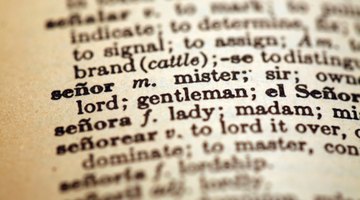Learning a new language can be a long and challenging journey. Not only do you have to learn an entirely new vocabulary, grammatical system and pronunciation, but you also have to learn how to spell words correctly in the writing system of that language.
If you’re an English speaker learning Spanish, you have to memorize complicated verb conjugations, remember to put gender on nouns and get used to a different word order. However, when it comes to spelling, you’re in for a pleasant surprise: Learning to spell in Spanish is actually a lot easier than in English. Most of the time, words are spelled the same way as they're pronounced. There are a few rules and some patterns that you have to memorize.
How to Spell in Spanish
Most letters in the Spanish alphabet are the same as in the English alphabet. There is only one letter that doesn't exist in the English alphabet: the letter "ñ" that appears in the word la montaña, meaning "mountain."
In Spanish, there are five vowel sounds with each letter uniquely representing one vowel sound. Most letters representing consonants make only one or two sounds, and often there are clear rules that tell you which sounds appears in what context. In cases where there are no rules, you have to memorize the correct pronunciation. Keep in mind also that there are letters that look like English letters but are pronounced differently than in English.
The Letter "Y" and the Combination "ll"
The letter "y" and the combination "ll" in Spanish produce the same sound. The actual sound that they produce depends on the dialect and the region and ranges from "y" as in the English word “yes” to “j” as in “jeans” or even “sh” or “zh” in some regions. Regardless of the sound these two produce, you will have to memorize the spelling. Some common words with “ll” are llamar – “to call,” llegar – “to arrive” and ella – "she."
Some common words with "y" are ayer – "yesterday" and ayudar – "help." A very common mistake among language learners is to confuse the spelling of haya (the subjunctive conjugation of the verb haber, "_to have") and _allá (there).
The Letters "B" and "V"
In English, the letters "b" and "v" correspond to two different sounds, but in Spanish, these two letters produce the same sound, which is somewhere between the English "b" and "v." You have to memorize which letter appears in which word.
Don't Forget the Silent "H"
Words with the silent "h" are some of the most commonly misspelled words, even by Spanish speakers. There are no rules to help you here, so you'll just have to memorize words where the silent "h" appears. Some common words that have a silent "h" are hora – "hour," hambre – "hunger," hoy – "today," hasta – "until," hablar – "speak" and the auxiliary verb haber – "have," with all its conjugations.
Silent "U" After "G" and "Q"
If you hear a Spanish word that has the sound "g" like the first sound in the English word girl, and that sound is followed by either “e” or “i,” remember that in spelling you must insert a silent "u" between "g" and the vowel, producing the combination gue or gui.
Some examples of this rule are the words guerra ("war," pronounced geh-rrah) and guitarra – "guitar." As you can see, in the English word “guitar,” the "u" is also silent, but in Spanish this situation is the rule.
If you write "g" immediately followed by "e" or "i" in Spanish, then "g" will be pronounced differently. It will have a sound somewhere between the English "h" and the "g" in "gorilla" but softer than "g." An example would be the word gente – "people."
In cases where the combination "gue" appears with two dots over the "u," the "u" is not silent. Examples are words like bilingüe (bilingual, pronounced bee-leen-gweh) or lingüística.
The silent "u" rule also applies to the combinations "qui" and "que." When "u" is sandwiched between "q" and one of the vowels "i" or "e," it is always silent. It appears in the word "because" in Spanish – porque, pequeño – "small," qui – "who" and many other commonly used words.
If you’re unsure about how to spell a word, get help from a good spellchecker, or better yet, approach a native speaker and ask ¿Cómo se escribe? (How is it written?)
Related Articles
References
Writer Bio
Tanya Mozias Slavin is a former academic and language teacher. She writes articles about education and linguistic technology, and has published in the Washington Post, Fast Company, CBC and other places. Find her at www.tanyamoziasslavin.com











